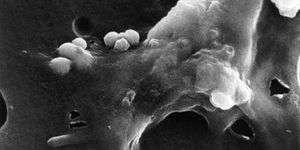Imaging Changes in the Genome
CT (computerized tomography) and PET (positron emission tomography) are crucial diagnostic tools. CT scans use computational tools to create cross-sectional images of the body from a series of X-rays that are taken of the patient. In PET scans, physiological processes in the body can be visualized with radioactive compounds, or radiotracers. Scientists have now developed a technique that can apply PET scans to the human genome to reveal changes in DNA. This genome-based imaging technique could be used in the detection of cancer, dementia, or heart disease, among many other conditions, according to new research reported in Nature Communications.
The scientists have revealed a so-called 'Imageable Genome' with this methodology. "The Imageable Genome represents the part of the human genome whose expression can be assessed with medical imaging," explained nuclear medicine specialist Dr. Martin Walter, a professor at the University of Lucerne. "It changes during the development and progression of practically every human disease."
The researchers utilized a massive amount of data for this effort. First, every individual gene in the Imageable Genome was identified in the existing body of research literature. This task that encompassed several million publications, noted Dr. Pablo Jané from the University Hospital of Geneva. This information was used to characterize the Imageable Genome.
Next, the investigators had to determine whether this approach could be used in diagnostics, added Dr. Xioaying Xu from the University of Lucerne. Patient data from over 60,000 people was added to the project, allowing the researchers to find changes or tests that could be used to diagnose, locate, or treat human diseases.
"The final step was to identify those imaging tests that are best suited to putting the new method into practice and thus bringing tangible benefits to the patient," added lead radiochemist Dr. Taelman of the University of Lucerne.
This technique was validated with imaging tests for Alzheimer's disease, bipolar disorder, coronary heart disease, some forms of cardiomyopathy, schizophrenia, and tumor detection.
"We see the Imageable Genome as a key with which new findings from genomics can be translated into imaging procedures," said Walter. "With this key, we see great potential for further medical research and innovations in the field of big data and artificial intelligence."
Sources: Universität Luzern, Nature Communications









